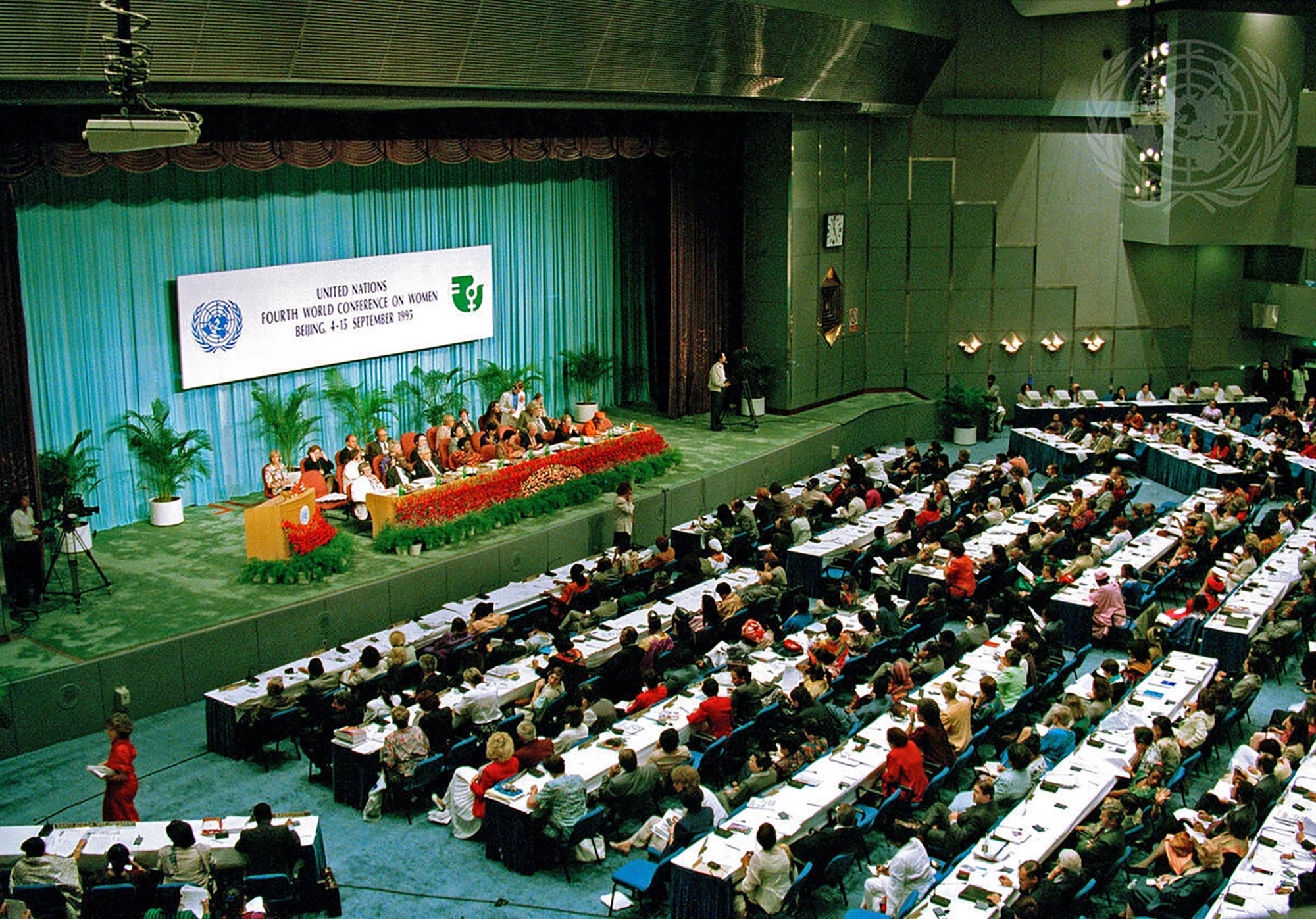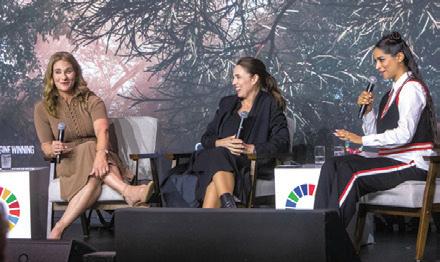
5 minute read
For All Women and Girls: The Fight for Gender Equality in 2025
Fourth World Conference on Women in Beijing, China, September 15, 1995. © UN Photo/Yao Da Wei
For All Women and Girls: The Fight for Gender Equality in 2025
In 1995, world leaders made a promise that one day, a future where women’s rights, gender equality, and empowerment would be the norm, not the exception. That promise was the Beijing Declaration and Platform for Action, but 30 years later, this important mission is at risk of slipping away.
Progress has been made, but it’s too slow, too fragile, and too uneven. At this pace, a girl born today will be nearly 40 before women achieve equal representation in parliament, 68 before child marriage is eradicated, and she may never see the end of extreme poverty for women and girls.
Coupled with the growing backlash against gender equality, it’s clear that the time for incremental change is over. The hard truth is this: our world is failing women and girls.
This is not just unacceptable— it’s unconscionable. The time for transformation is now.
This International Women’s Day, UN Women has launched a global campaign to mark the 30th anniversary of the Beijing Declaration and Platform for Action, “For ALL Women and Girls.” Focusing on several key areas, this campaign is a rallying cry to take action.
A DIGITAL REVOLUTION FOR ALL WOMEN & GIRLS
Technology should be a great equalizer, but nearly half of the world’s women remain offline, excluded from the opportunities of the digital age. We must bridge the digital divide, expand internet access, and ensure online spaces
are safe from harassment and violence. Every woman and girl deserves to have her voice heard— both online and offline.
FREEDOM FROM POVERTY
Poverty is not just about money; it’s about power. Almost 10 percent of the world’s women and girls remain trapped in extreme poverty. Investing in education, fair wages, and entrepreneurship is the key to breaking generational cycles of disadvantage and unlocking global prosperity.
ZERO VIOLENCE AGAINST WOMEN & GIRLS
Violence against women is a global epidemic. Over 736 million women have endured physical or sexual violence, and crises—from wars to pandemics—only make things worse. It’s time to hold perpetrators accountable, expand survivor support services, and change the norms that enable violence in the first place.
AND EQUAL DECISION-MAKING POWER
The hands of power are still overwhelmingly male. There are 113 countries that have never had a woman Head of State. Yet, when women lead, entire communities thrive. We must smash the barriers—financial, structural, and cultural—that keep women out of leadership.

WOMEN’S LEADERSHIP: A FORCE FOR GLOBAL CHANGE
As we mark 30 years since the Beijing Declaration, one truth remains clear—when women lead, progress follows. Across sectors and communities, women are not just demanding change; they are driving it. Women Rise for All, an initiative led by UN Deputy Secretary-General Amina J. Mohammed, embodies this momentum, uniting women leaders to accelerate action on the Sustainable Development Goals. By fostering collaboration and amplifying women's voices on the global stage, Women Rise for All reinforces what history has shown us: inclusive leadership leads to stronger, more resilient societies. The path to gender equality is not just about breaking barriers—it’s about ensuring women have the power to shape the future for all.
PEACE & SECURITY
Conflict destroys lives, and women are disproportionately affected. In 2023 alone, 612 million women and girls lived in conflict zones—double the number from a decade ago. Women must have a seat at every peace table. The world cannot afford to ignore half of its population when resolving conflicts and rebuilding nations.
CLIMATE JUSTICE FOR WOMEN & GIRLS
Women are on the frontlines of climate change but too often left out of climate solutions. Whether it’s sustainable agriculture, environmental policy, or disaster resilience, women must be leading the fight for a sustainable future.
The next generation is ready to lead. Investing in adolescent girls through education, leadership training, and economic opportunities is the fastest way to achieve gender equality across all sectors. Young women and girls are at the forefront of movements for social change, from climate activism to gender justice. By creating platforms for young women to lead and innovate, we ensure that the next generation is equipped to dismantle systemic inequalities.
“Gender equality underpins the success of all the Sustainable Development Goals,” said Lilly Singh, award-winning entertainer and one of the UN Secretary-General’s Sustainable Development Goals Advocates. “It is hard to overstate its importance. Girls and women are half of the world’s population and hold half of the world’s human potential. When we invest in girls and women, the whole world benefits.” With only five years left to meet these, we cannot afford to delay.
WHAT CAN YOU DO?
Your voice is powerful, and your platform, no matter its size, is a tool for change. Share messages, stories, and information with those around you and online using the hashtag #ForAllWomenAndGirls. When we take a stand together to support organizations that fight for women’s rights and mentor young women in our communities, we make it possible to achieve lasting, positive change.
We all have the power to demand action from our leaders, and our voices can come together to call on our governments to invest in gender equality policies and programs. Vote for leaders committed to gender equality and hold policymakers accountable—that is political advocacy at work.
We cannot wait another 30 years for change—the stakes are too high and the cost of inaction is too great. Let history remember 2025 as the year we refused to give up, and as the year we achieved the promise of the Beijing Declaration and Platform for Action.










